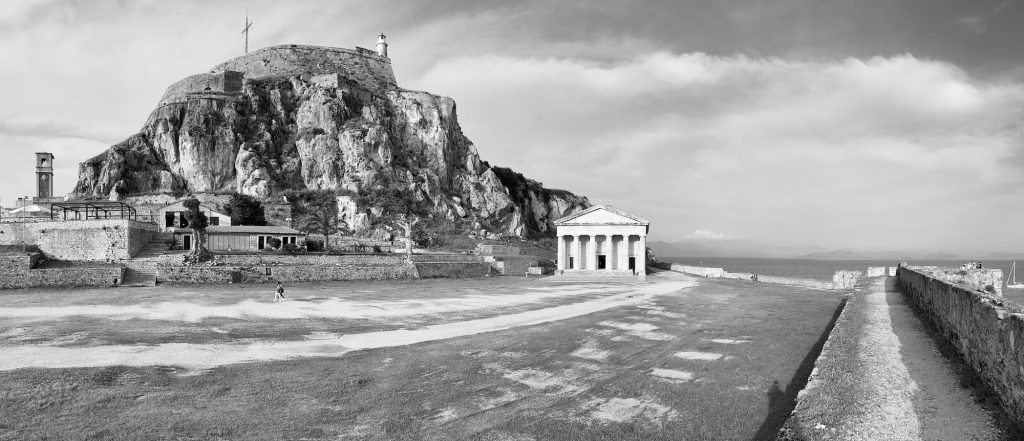
So this actually happened: After 17 months of working remotely with seven teams based in four countries, everybody hopped into a car, a bus, onto a train, a ferry, a plane – and went to Corfu. Where we had a much needed all-hands workshop and consortium meeting, at the Ariti Hotel in Kanoni, in the first week of May, 2022. We still have to pinch ourselves. Now what’s going on in terms of prototype development, project management and project exploitation will be subject of a number of upcoming deliverables. This post instead summarizes the activities during our first “real” get-together and DW’s media pilot test run, which was at the center of it all. We also have a couple of nice black & white shots for you.
DW arrived first and used a postponed Greek bank holiday (May 2nd) to set up gear, install/update software, prepare prototype testing schedules, and make the conference room of the Ariti our XR4DRAMA makeshift headquarters. The other partners arrived over the course of the next 24 hours or so, and by the morning of May 3rd, the first all-hands in-person meeting was in full swing. A new version of the Windows-based XR4DRAMA authoring and collaboration had just been released by Nuro. And up2metric had freshly reiterated on their AR location scouting app for Android. The Corfu pilot was ready for take-off.
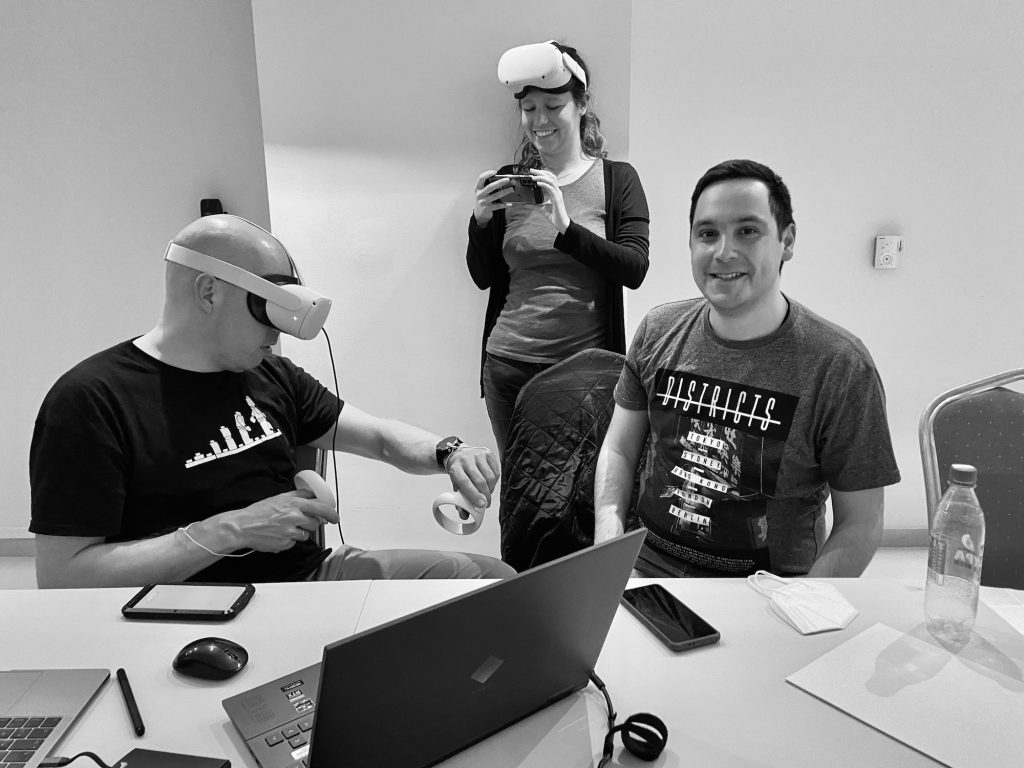
Here’s a (very) quick description of what the test run looked like:
In a first step, DW and the technical partners set up a new project (picking Corfu City and the Old Fortress as a focus area), added users/meta data – and waited for the automated systems to do its thing, i.e.: create a rough map and 3D model, all sorts of preliminary data regarding points of interest included.
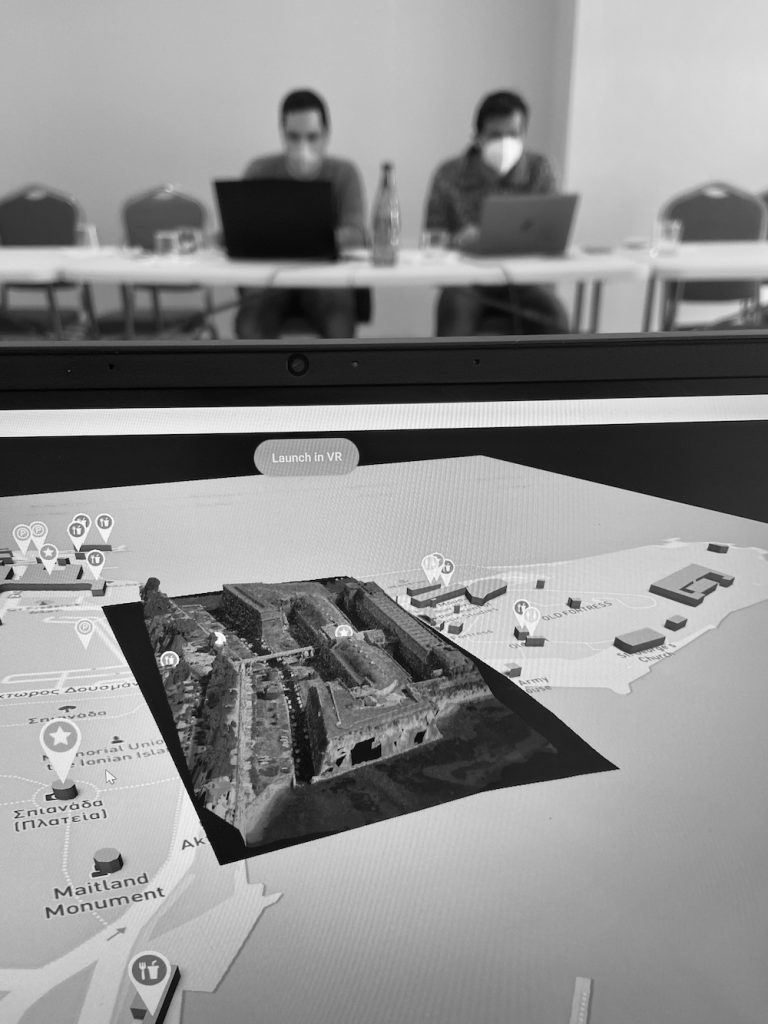
“Project Corfu” in the XR4DRAMA authoring tool on a laptop.
In a second step, everybody explored the model, checking out data points as well as simple renderings of buildings/landmarks – and more sophisticated ones, based on drone visuals. Situation awareness wasn’t half bad, but it wasn’t great yet either. Which is why the team went on to to create a long task list for the location scout: Take a 360 picture over here, check out noise levels over there, find a good spot to park the production vehicle, snap a picture of the menu of that nice little restaurant, and so on.
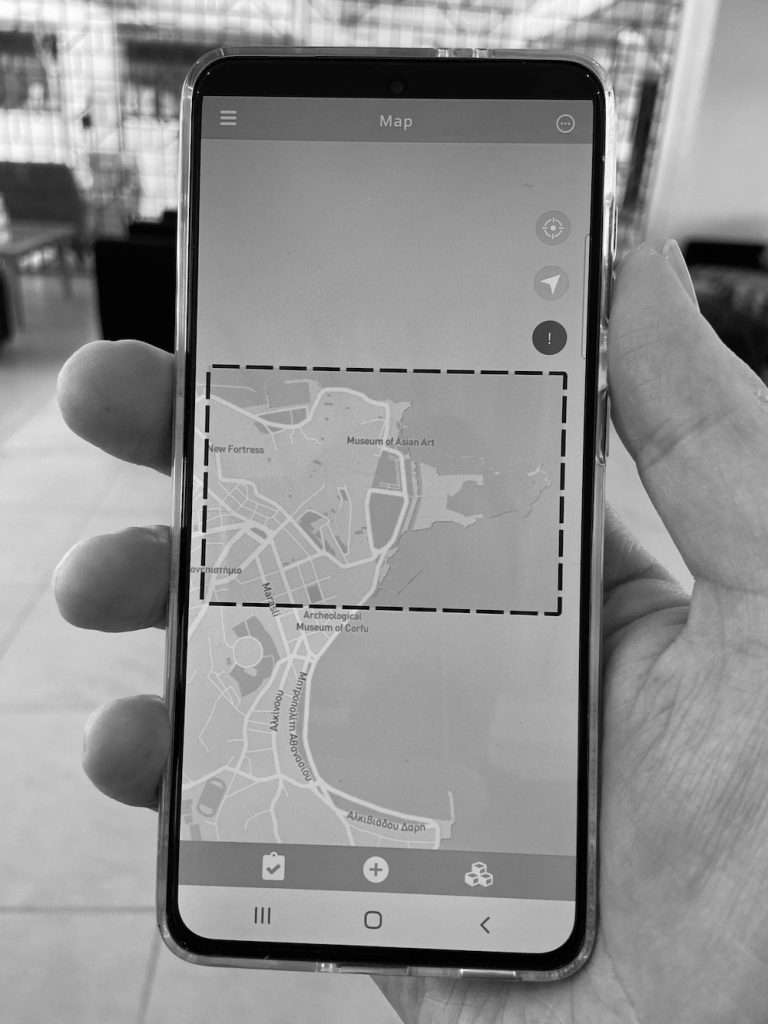
Step three was about actually going to town, checking what’s there with our own eyes, adding and correcting some data, and – of course – checking every box on that task list. Our aim: Make sure the remote production team could get to the next level of situation awareness. All this was done with the XR4DRAMA mobile app (which we also used for navigation).
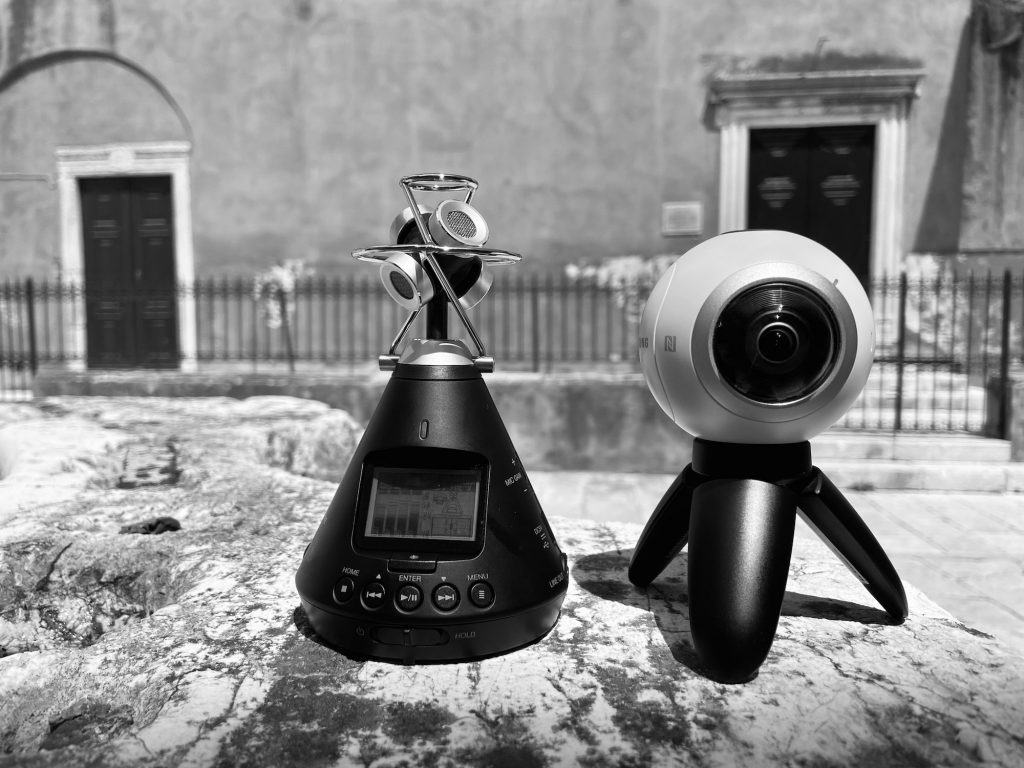
Step four saw us exploring the 3D model yet again – after the automatically generated and manually collected data had been merged (and another version of the authoring tool had been installed). This time around, we also switched to VR mode: to walk on and teleport across the streets of Corfu, to discuss our designated media production “on site”.
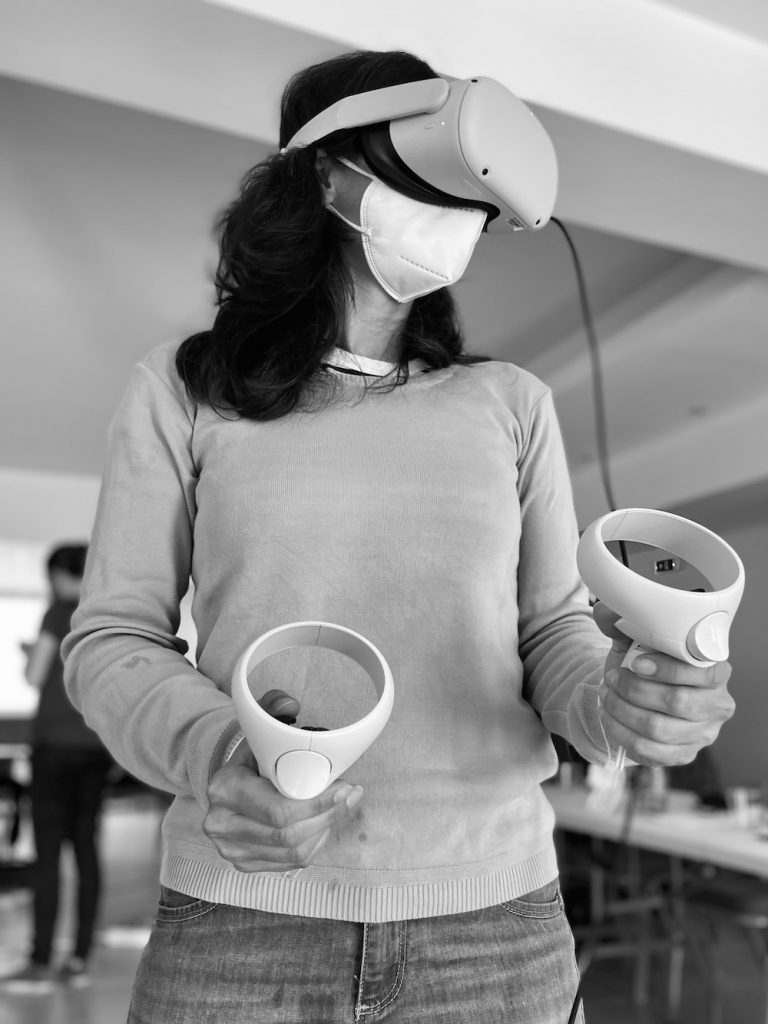
What we’ve described here in a few sentences actually took more than two days, until the morning of May 5th. That’s because we painstakingly watched system performance, documented glitches and bugs along the way, discussed new features, created a lot of technical tickets – and also had to walk around/scout quite a bit. All in all, the first proper test run for the XR4DRAMA media production use case was great fun, albeit a lot of work.
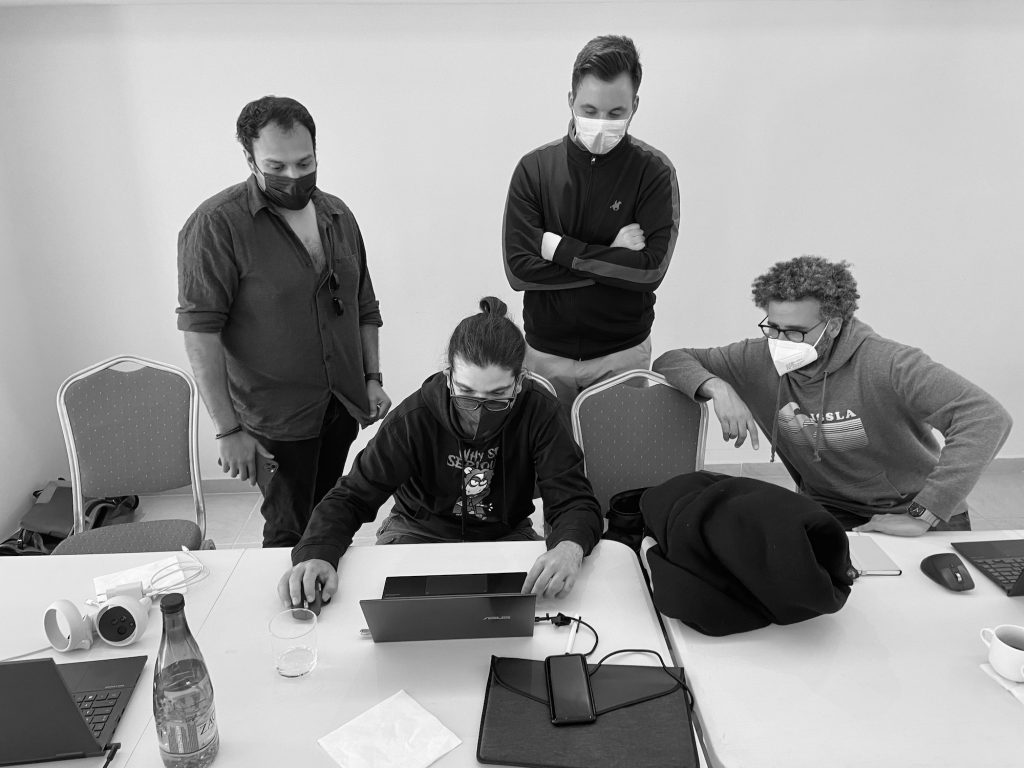
Right after, we had a very effective plenary meeting, and, last but not least, a splendid social dinner for which we returned to a very cozy outdoor place in the backstreets of Corfu City (great scouting, up2metric!).
The entire workshop/meeting was a wrap by Friday afternoon (May 6th), which left some of us with precious extra time to explore the beautiful island and take some more pictures and notes. By Saturday, the entire team had left, and our makeshift headquarters at the Ariti had become a very conventional hotel conference room again, free of any geeky XR gear.
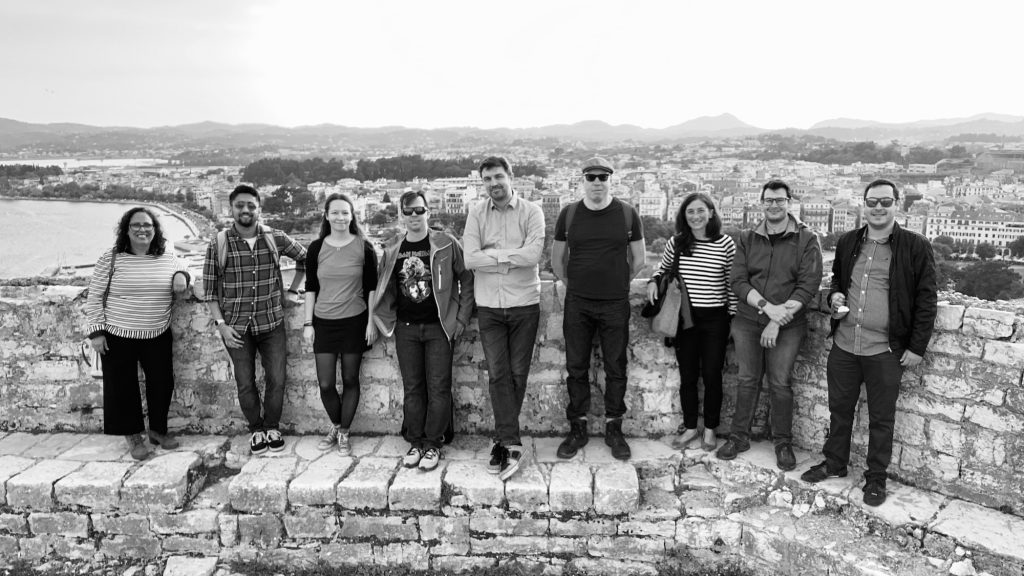
By the way: As we’re publishing this, the consortium is on the road again, conducting AAWA’s disaster/risk management pilot use case in Vicenza, Italy. Stay tuned for another blog post coming later this month.
